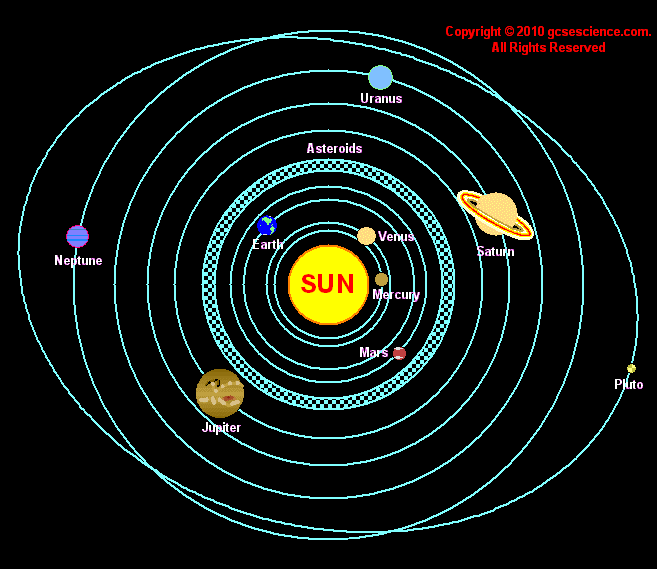
ALPHA CENTAURI
Alpha Centauri is a triple star system located about 4.37 light-years away from Earth, making it the closest known star system to our solar system. The three stars are Alpha Centauri A, Alpha Centauri B, and Proxima Centauri. Proxima Centauri is the closest of the three and is a red dwarf star. In 2016, an Earth-sized exoplanet, Proxima b, was discovered orbiting Proxima Centauri in the habitable zone, but its potential for life is still uncertain. Research and observations on the Alpha Centauri system continue to provide valuable insights into the universe.



*Proxima Centauri B: Overview*
*Discovery:*
- Discovered by Anglada-Escudé et al.
- Discovery site: European Southern Observatory
- Discovery date: 24 August 2016
- Detection method: Doppler spectroscopy
*Orbital Characteristics:*
- Semi-major axis: 0.04856±0.00030 AU
- Orbital period (sidereal): 11.1868+0.0029 −0.0031 days
- Argument of periastron: 310 ± 50
- Semi-amplitude: 1.24 ± 0.07
*Physical Characteristics:*
- Mean radius: 0.94–1.4 R🜨
- Mass: ≥1.07±0.06 M🜨
- Temperature: Teq: 234 K (−39 °C; −38 °F)
*Orbit and Habitability:*
- Orbits Proxima Centauri at a distance of roughly 0.05 AU (7.5 million km; 4.6 million mi)
- Orbital period approximately 11.2 Earth days
- Believed to be potentially Earth-like
- Minimum mass of at least 1.07 M🜨
- Orbits within the habitable zone of Proxima Centauri
*Unknown Properties:*
- Other properties are poorly understood
- Not known whether it has an atmosphere
*Proxima Centauri:*
- Proxima Centauri is a flare star with intense electromagnetic radiation emission
- Intense radiation could strip an atmosphere off Proxima Centauri b
- Proximity to Earth offers opportunities for robotic space exploration
*Significance:*
- Announced on 24 August 2016 by the European Southern Observatory
- Major discovery in planetology
- Increased interest in the Alpha Centauri star system
- Proxima Centauri b is the best-known exoplanet
*Exploration Opportunities:*
- Proximity to Earth provides opportunities for robotic space exploration
Example:
Breakthrough Starshot project This detailed list organizes information about Proxima Centauri b, covering its discovery, orbital and physical characteristics, habitability considerations, properties that remain unknown, details about its parent star (Proxima Centauri), and the broader significance of the discovery in the field of planetology.
*Alpha Centauri AB: Binary Star System*
Nature:
- Sun-like stars
- Alpha Centauri A (Class G) and Alpha Centauri B (Class K)
Appearance:
- Naked eye appears as a single star with an apparent magnitude of −0.27
- Brightest star in the constellation, third-brightest in the night sky after Sirius and Canopus
Characteristics:
Alpha Centauri A:
- Mass: 1.1 times that of the Sun
- Luminosity: 1.5 times that of the Sun
Alpha Centauri B:
- Mass: 0.9 times that of the Sun
- Luminosity: Less than 0.5 times that of the Sun
- Orbital Motion:
- Orbit around a common center with an eccentric elliptical orbit
- Orbital period: 79 years
- Distance between A and B varies from 35.6 AU to 11.2 AU
*Proxima Centauri (Alpha Centauri C): Red Dwarf*
Nature:
- Small faint red dwarf (Class M)
Visibility:
- Not visible to the naked eye
Distance:
- Closest star to the Sun at 4.24 ly (1.30 pc)
Distance from Alpha Centauri AB:
- About 13,000 AU (0.21 ly)
Confirmed Planets:
- Proxima b (2016): Earth-sized planet in the habitable zone
- Proxima d (2022): Candidate sub-Earth, orbits closely to the star
- Controversial Planet:
- Proxima c (2019): Mini-Neptune 1.5 AU away, controversial existence
- Planetary Possibilities in Alpha Centauri AB:
- Alpha Centauri A: Candidate Neptune-sized planet in the habitable zone (nature not confirmed) - Alpha Centauri B: No known planets; planet Bb (purported discovery in 2012) later disproven
This detailed organization presents information about the Alpha Centauri AB binary star system and Proxima Centauri, including their nature, appearance, characteristics, orbital motion, and the status of confirmed and controversial planets.


MOVIE REVIEW: "ENDER'S GAME"
"Ender's Game," based on the novel by Orson Scott Card, is a visually stunning science fiction film that delves into complex themes of leadership, morality, and the consequences of war. Directed by Gavin Hood, the film follows the story of Ender Wiggin, a young prodigy recruited by the military to lead humanity's defense against an alien species known as the Formics. Visually, "Ender's Game" is captivating, with stunning special effects that bring the futuristic world to life.
The battle scenes, particularly those set in zero-gravity simulations, are intense and exhilarating, showcasing the technological prowess of the filmmakers. At its core, "Ender's Game" is a character-driven story, with Asa Butterfield delivering a compelling performance as Ender Wiggin. Ender grapples with the weight of his responsibilities, struggling to reconcile his innate compassion with the ruthless tactics required to defeat the Formics.
Supporting performances from Harrison Ford as Colonel Graff and Ben Kingsley as Mazer Rackham add depth to the ensemble cast. The film raises thought-provoking questions about the nature of warfare and the ethics of using children as soldiers. It challenges viewers to consider the moral implications of sacrificing individual lives for the greater good, as well as the importance of empathy and understanding in times of conflict. One of the film's central themes is the concept of understanding one's enemy, exemplified by Ender's journey to empathize with the Formics. This theme ties into the broader message of seeking peaceful solutions and avoiding the cycle of violence.
*Lessons Learned:*
- Leadership: "Ender's Game" explores the qualities of effective leadership, highlighting the importance of strategic thinking, empathy, and decisiveness.
- Empathy: The film emphasizes the value of understanding one's enemies and the power of empathy in resolving conflicts peacefully.
- Consequences of War: Through Ender's experiences, the film illustrates the human cost of warfare and the moral dilemmas faced by those in positions of power.
*Highlight: Alpha Centauri*
In "Ender's Game," Alpha Centauri serves as humanity's potential new home, highlighting the theme of exploration and survival. The distant star system represents hope for the future of humanity, motivating characters to fight for their species' survival against the Formic threat. Alpha Centauri also symbolizes the unknown and the vastness of space, underscoring the adventurous spirit of the film's narrative.


ALPHA CENTAURI PHOTO GALLERY















